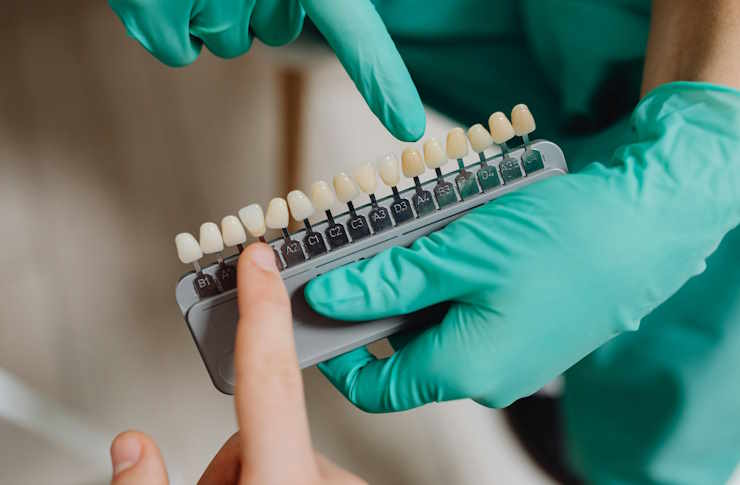Why Seniors Choose Screwless Dental Implants and How Much Do They Cost?
Considering dental implants but worried about a complex, invasive procedure? Discover why many seniors are turning to a simpler, screwless alternative for a confident smile. This guide breaks down the benefits and costs of this modern dental solution, helping you find the right option for a comfortable, healthy future.

What are the benefits of screwless dental implants for seniors?
Screwless dental implants, also known as press-fit implants, offer several advantages that make them particularly appealing to seniors. These implants are designed to be inserted into the jawbone without the need for screws, reducing surgical complexity and potential complications. The benefits include:
-
Reduced surgical trauma: The absence of screws means less drilling and manipulation of the bone, leading to a gentler procedure.
-
Faster healing time: With less invasive surgery, seniors can expect quicker recovery periods compared to traditional implants.
-
Lower risk of infection: Fewer components and a simpler design reduce the potential entry points for bacteria, decreasing the risk of post-operative infections.
-
Improved stability: Screwless implants often achieve primary stability more quickly, which can be particularly beneficial for seniors with compromised bone density.
How do screwless implants compare to traditional dental implants?
When comparing screwless implants to their traditional counterparts, several key differences emerge:
-
Insertion method: Traditional implants use screws to secure the implant, while screwless implants rely on press-fit technology or expansion mechanisms.
-
Bone preservation: Screwless implants typically require less bone removal during placement, which can be advantageous for seniors with reduced bone mass.
-
Immediate loading potential: Some screwless implant systems allow for immediate loading of temporary crowns, providing faster aesthetic results.
-
Long-term success rates: While both types of implants have high success rates, some studies suggest that screwless implants may have comparable or slightly better long-term outcomes in certain cases.
-
Suitability for different bone types: Screwless implants may be more adaptable to varying bone densities, which can be beneficial for seniors with osteoporosis or other bone-related conditions.
What is the screwless implant procedure and recovery like?
The screwless implant procedure typically involves the following steps:
-
Consultation and planning: The dentist assesses the patient’s oral health and creates a treatment plan.
-
Implant placement: Using specialized tools, the implant is pressed or tapped into a precisely prepared site in the jawbone.
-
Healing period: The implant integrates with the bone over several weeks to months, depending on individual healing factors.
-
Restoration: Once healed, an abutment and crown are attached to complete the tooth replacement.
Recovery from screwless implant surgery is often smoother than with traditional implants. Patients may experience:
-
Less post-operative pain and swelling
-
Reduced need for pain medication
-
Faster return to normal activities
-
Shorter overall treatment time in some cases
However, proper oral hygiene and follow-up care remain crucial for successful healing and long-term implant survival.
What is the cost of screwless dental implants?
The cost of screwless dental implants can vary widely depending on several factors, including the specific implant system used, the number of implants needed, and the dentist’s expertise. Here’s a general breakdown of costs:
| Component | Cost Range |
|---|---|
| Single screwless implant | $1,500 - $3,000 |
| Abutment and crown | $1,000 - $3,000 |
| Additional procedures (if needed) | $250 - $2,500 |
| Total cost per tooth | $2,750 - $8,500 |
Prices, rates, or cost estimates mentioned in this article are based on the latest available information but may change over time. Independent research is advised before making financial decisions.
It’s important to note that while the initial cost of screwless implants may be higher than traditional implants in some cases, the potential for reduced complications and faster treatment times could offset this difference.
What financing options are available for seniors seeking dental implants?
Recognizing the significant investment required for dental implants, various financing options are available to help seniors manage the cost:
-
Dental insurance: Some plans may cover a portion of implant costs, especially if deemed medically necessary.
-
Medicare Advantage plans: While original Medicare doesn’t cover dental implants, some Medicare Advantage plans offer dental benefits that may include implant coverage.
-
Flexible spending accounts (FSAs) or health savings accounts (HSAs): These tax-advantaged accounts can be used to pay for dental implant procedures.
-
Dental financing companies: Specialized healthcare credit cards or loan programs often offer low or zero-interest financing for dental procedures.
-
In-house payment plans: Many dental practices provide their own financing options, allowing patients to spread the cost over time.
-
Dental schools: Some university dental programs offer implant services at reduced rates as part of their training programs.
Seniors should carefully consider their budget and explore multiple financing options to find the most suitable approach for their dental implant treatment.
Screwless dental implants offer seniors a modern, less invasive option for tooth replacement with potential benefits in terms of comfort, healing time, and long-term success. While the cost can be substantial, various financing options make this advanced dental technology more accessible. As with any medical procedure, seniors should consult with dental professionals to determine if screwless implants are the right choice for their individual needs and circumstances.
This article is for informational purposes only and should not be considered medical advice. Please consult a qualified healthcare professional for personalized guidance and treatment.




